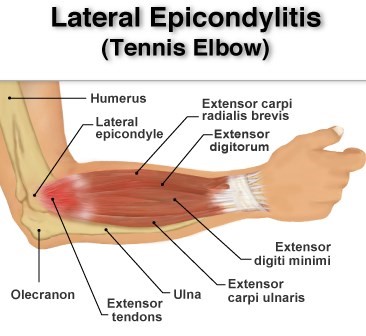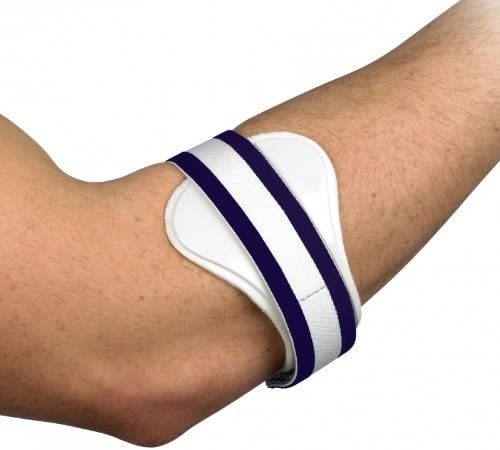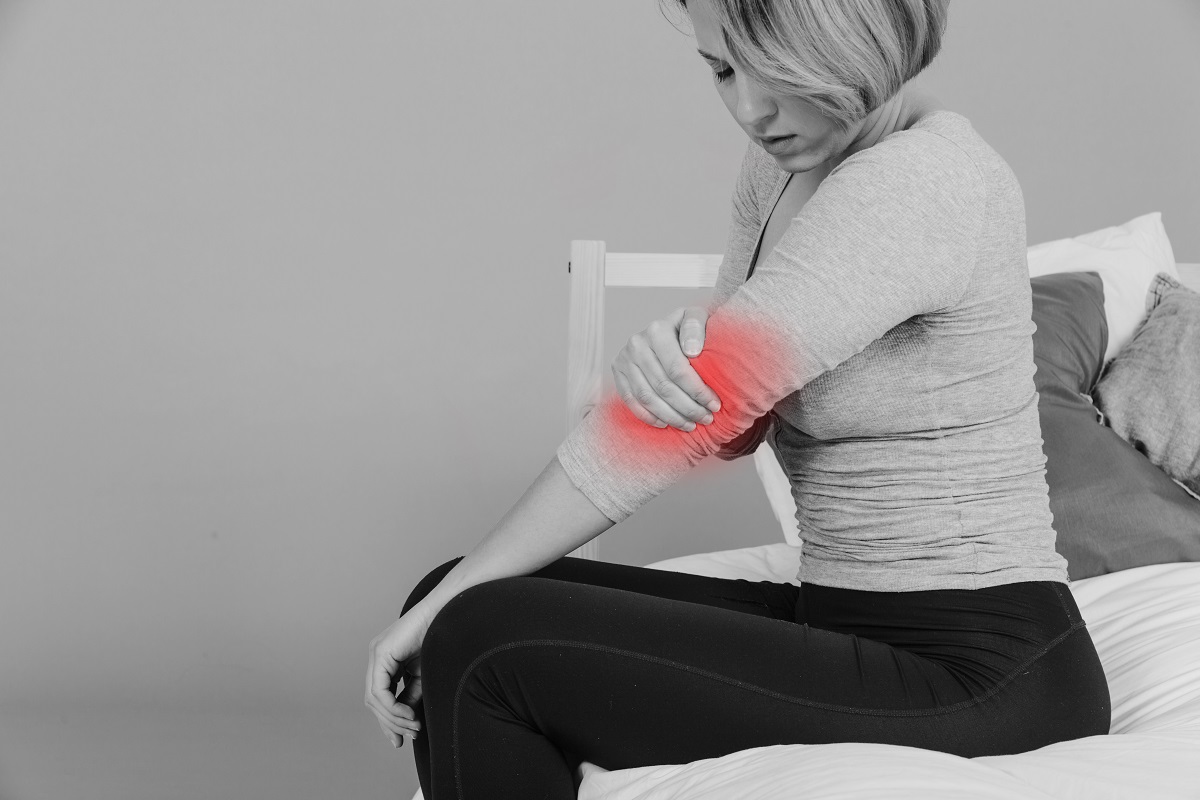Tennis elbow, or lateral epicondylitis is caused from overusing the joint.
Tennis elbow can arise when the tendons joining the forearm muscles along the outside part of the elbow become inflamed, irritated, and damaged from repetitive actions or overuse activities, such as tennis after a winter season of not playing, or cycling leaning onto handlebars and over gripping, or using secateurs in the garden!

The elbow joint is made up of three bones: the upper arm bone (humerus) and the two bones within the forearm (ulna and radius). Bony protruberneces at the bottom of the humerus are called epicondyles. The outer epicondyle is known as the lateral epicondyle.Ligaments, muscles and tendons all insert around the forearm and elbow bones and joint to help it maintain structural integrity and to help it move.
Tennis elbow involves injury or strain to the tendons and the muscles in the forearm. The forearm muscles work to extend the fingers and the wrist. The forearm extensor tendons attach the bone and the muscles together and insert onto the lateral epicondyle. The tendon that is often involved with this condition is the extensor carpi radialis brevis or longus.
How to Treat Tennis ElbowStop Aggravating Your Arm Pain This might sound obvious, but identify the movement that is causing the pain. It is usually a repetitive movement such as mouse clicking, carrying shopping, gripping an object or playing a certain sport. When you identify the causative factor, reduce or stop the movement.
Rest The first step in the recovery process is to allow your arm the time needed to rest. Stop participating in the specific aggravating sports or heavy work activities.
Ice and anti-inflammatory gel locally applied to reduce inflammation. You can do this by applying ice to the outside of your elbow, ensure that you wrap the ice to prevent any burn.
Modify Your Equipment If you are participating in racquet sports, you might need to have your equipment checked to make sure it fits properly?
Racquets that are stiffer or looser-strung can reduce the amount of stress placed on the forearm, which means they won’t have to work as hard.
If you are using an oversized racquet, change to a smaller head and see if that helps.
Try modifying the size of your grip by changing your racquet or building up the grip….
Adding a Heat Sleeve or Grip Pallet changeThis is the PROPER way of increasing a grip size. Each heat sleeve will add exactly one grip size and maintain the grip’s shape. It is done by shrink wrapping a rubber sleeve on to racket handle pallet. It is quick to do and the preferred method by most racket brands. If you add a heat sleeve and it is too big, it can be removed.
Some brands offer grip pallets. These are the plastic moulds that fit over the racket, beneath the grip. They normally come in two parts and are stuck and/or tacked onto the racket mould. They can be removed and replaced with another size – THUS ALTERING YOUR grip size.
Be careful with do it yourself grip modification as the replacement grip will add probably more than a grip size, it will alter the balance of the racket also. The plus is that it will give a very soft feel but be careful not to make the grip too big for your hand.
Get a Coach Seek advice from a coach on correct technique for your sport, as poor technique can put your arm and elbow in a disadvantaged posture, leaving it at risk of tennis elbow.
Get Treatment Acupuncture, and Electrotherapy modalities as well as soft tissue treatments can speed up resolution and healing or the inflamed areas, ultimately we can also advise and educate you how to strengthen the area for your tennis or sports return, both fitter and stronger.

Tennis Elbow Support, Epicondylar Clasp A tennis elbow support fits 3 fingers width below the elbow crease, and redistributes the insertional strain and load of muscular contraction and work, away from the epicondyle, it creates what is known as a “false origin” in that it makes your arm think that the tendons are joining further down your arm. This helps to reduce the symptoms by allowing the tendons and the muscles to rest.
Review your DSE set up and Computer Posture Ask a colleague to take a photo of your side profile at work, and bring it to us or your therapist, and we can guide you how to modify or improve your computer set-up.




You must be logged in to post a comment.